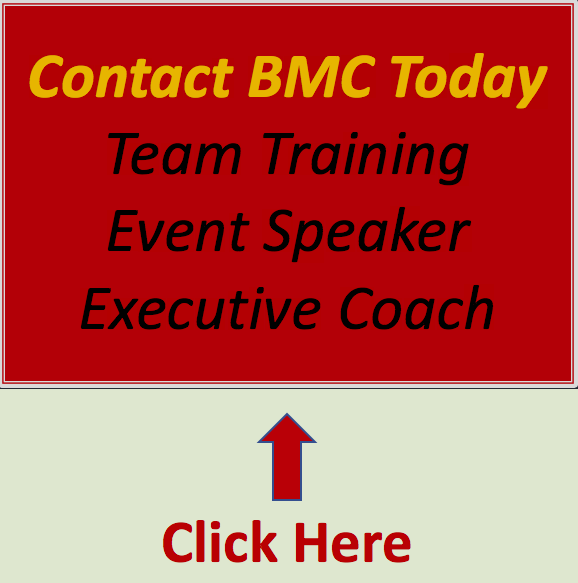Employee Onboarding Strategy Checklist - Improve Your Onboarding Plan
/I don’t think I can overestimate the importance of a well-thought-through onboarding strategy. A smart onboarding plan can make a new employee’s energy and effectiveness go from adequate to exceptional.
Your onboarding strategy should empower and excite your new employee, giving them confidence they made the right decision to join your team. Their onboarding experience should also accelerate their familiarity with your company culture and help them build the relationships they need to successfully use the skills you hired and to do the work you need them to do.
Without a doubt, great onboarding is a Win-Win for them and for you, but let’s face it, it’s an area where almost every leader and every team/company struggles. So, let’s look at how you can fix that to benefit your team/company and every future new employee.
A Fresh Start
As a leader you may have just gone through a multi-month hiring process that has meant a lot of preparation, schedule balancing and sweat equity with HR and the other people on your hiring panel. Finally, you are seeing the light at the end of the tunnel and are keeping your fingers crossed until your offer is accepted. And while I would love for the hiring process to truly be over for you, I’m sorry… it is not. You need prepare for the next big wave of work - onboarding. The great thing is, once you have a fresh new orientation plan in place, it will be easier for every other new employee or promoted employee (yes, promoted employees need much of the following list as well).
Great onboarding is the transition step that is going to help your brilliant new employee quickly grow into a happy, engaged, proud, productive and loyal member of your team. Onboarding includes product and procedure information as expected. But, in today’s high-performing companies, great onboarding is also a detailed training and orientation plan that introduces company values and culture and sets up expectations about everything from the company’s commitment to work-life balance to how employees are expected to behave when working with a team or in high-stress situations (phew). This is your first and best opportunity to have your new team member experience your company values and culture first-hand – not from some words in a manual or on a poster on a wall, but in real life terms which is the absolute perfect way for them to learn about, understand and then share your values and culture with others.
So, just like you don’t want to waste time during onboarding, let’s get into what you can include when you put together your step-by-step onboarding plan that can be used for any new member of your team.
In many ways, onboarding begins during each interview because you can use the results you tracked on your BEI (Behaviour Event Interview) scorecard:
a. What were their demonstrated values, experience and strengths?
b. What value set of the company / team did you demonstrate?
c. Use the strengths and opportunities for learning to discuss possible areas for training and options with your new employee.
Manage their expectations – before their first day:
a. Appointments with HR and to get a security pass – and how to use the security pass
b. What first/last name do they want for security, email etc?
c. Hours to be available, and if virtual, when – how – why?
d. Vacation and benefits information
e. A list of policies and support departments / agencies
f. Virtual workspace – when – how – why?
g. What is the dress code – in office or remote?
h. How to use the elevator?
i. Options for getting to work / parking
j. Places for coffee / lunch / gyms
Now that they have started, give them team introduction / information:
a. As their leader, be there to greet your new hire on their first day
b. Ask your team to come in to welcome the employee
c. New employees go to lunch the first day with you - their leader
d. Organization chart including names and phone numbers
e. List of company jargon, abbreviations and unique terms
f. Give them a company and / or office tour
g. Of course – let's not forget product / service orientation
h. What key performance metrics are they and the team measured?
i. As appropriate, introduce new employees to senior executives.
j. Discuss industry associations, conferences, magazines, training, AGM schedules etc.
k. Introduce them to their onboarding team and mentors
l. As their leader, follow up each day for at least a week and then periodically after that – often in your one-on-one meetings
Prepare their space / equipment:
a. Will they have a desk or hoteling with a locker?
b. Phone, computer, email address, calendar, teams, etc.
c. Give them merchandise (sweatshirts or portfolios) to help them feel part of the team.
d. Walk them through fire safety and emergency contact processes
Discuss the company Vision, Mission & Values:
a. What do they mean to the team?
b. What do they mean to their work?
c. Be honest… are there any major challenges ahead?
Bring them to meetings asap (and debrief them):
a. Invite them to upcoming team meetings
b. Invite them to future one-on-ones
c. Team expectation of cameras on or off during virtual meetings
Discuss projects and goals for their first 90-days:
a. What key performance metrics are they and the team measured?
Discuss transparency & managing expectations:
a. Delivering work on time is base line. Early is the goal.
b. Respect is non-negotiable. It’s OK to disagree or have a different opinion, but to discuss by sharing and listening.
c. Expect recognition and constructive feedback:
i. Both should be seen as growing opportunities and discussions
d. What to do when a due date / deliverable is in jeopardy?
e. Meetings are safe spaces where we share listening and respect.
f. Discussions of someone underperforming against agreed upon KPI’s will happen quickly in what is meant to be a safe and supportive space.
Yes, it takes a time and planning to onboard a new employee. But your investment will pay dividends in many multiples. Recently, Glassdoor shared a report that stated effective employee onboarding increases retention by 82% and boosts productivity by 70%. You just hired someone – don’t you want them to stick around and be amazing, knowing they made the right decision to join your team?
Your onboarding plan is your best opportunity to set the tone for the care and respect you will deliver to them and expect from them.
Conclusion
Onboarding used to be a primarily HR responsibility, but onboarding has evolved just like effective leadership, employee expectations and team engagement have evolved. Now leaders must take on another significant people-focused role - onboarding. As leaders it is our responsibility / your responsibility to create an onboarding program that will put us in the same league as other great leaders and great teams around the globe.
PS: As I mentioned earlier, onboarding isn’t only for new hires – some version of a full onboarding process can also be important when:
An existing employee moves to a different department.
Your company does a merger and acquisition of another company.
An employee comes back from a leave of absence.
BONUS Idea #1: Set up a multi-person onboarding team unique to each new employee.
When you set up an onboarding team, one person will likely still be responsible for much of the traditional formal policy and HR process that will be needed for any new hire. And then, the rest of the team will take over. For example, the other members of an employee’s unique onboarding team may be responsible to set up equipment like computers and phones as well arranging for email addresses and appointments with security to get any access fobs they may need. Others may share responsibility (and give different points of view and experiences) for the direct job information and may be a commitment of a few days to a few weeks depending on the work and company. As a leader you will also be part of their unique onboarding team and keep checking in with them, making sure they have everything they need. Sharing onboarding responsibilities (which included a form of mentoring) is a great idea because besides not occupying one person’s time can also strengthen relationships with multiple team members. These responsibilities can include:
Introducing them to other members of the team, other departments and suppliers.
Mentoring for a few weeks or months.
Perhaps having the new employee job-shadow them part-time.
Make sure they are invited to important and relevant meetings that align to their work. Let them know it is OK for them to initially audit these meetings. But also book some one-on-one time with them before and after the meeting to prepare them and debrief the meeting. Asking them if they had any ideas about the topic discussed will help them feel more confident.
BONUS Idea #2: Ask for feedback
Throughout the mentoring process ask your new employee for feedback. It’s important for you to hear what they need and why they need it. It’s your way to continuously improve the process. Consider the opportunity for them to make the adjustments they recommended. After they have been with you for a year, you may even want them to be part of your next new hires onboarding committee.
Some post onboarding general questions you might ask new hires:
Do you have recommendations for improving the onboarding process? What do you wish you had learned during your first week/month?
Do you feel you are part of the team? Are you comfortable with the team dynamics and overall company culture?
Are there any areas of the company, team and/or your job where you feel you need more training or support?
Is there anything I have not asked that you would like to share?
Some post onboarding position related questions you might ask new hires:
How are you settling into your role? What are some of the challenges you’ve encountered?
What are you most proud of accomplishing since you’ve joined the company / team?
Do you feel you have a clear understanding of your responsibilities and expectations?
Do you feel you have the resources and tools you need to perform your work effectively?
Is there anything I have not asked that you would like to share?
Following up and checking in on new hires includes providing safe and inclusive environments for employees to share their opinions and ideas without fear of repercussion. Openly acknowledge the value of diverse perspectives and explicitly invite new employees to contribute their thoughts during meetings, demonstrating the openness of your company’s culture.
Thank you for reading about how to improve your onboarding plan and set up an employee onboarding strategy check list. I look forward to hearing from you if you have any questions.
Bruce
Other articles in this series include:
About Bruce and Bruce Mayhew Consulting.
Bruce is Corporate Trainer, Keynote Speaker and Executive Coach.
Bruce Mayhew Consulting specializes in customized Difficult Conversations, Crucial Conversations or Conflict Management Training, Email Etiquette Training, Leadership & New Leadership Development, Generational Differences, Time Management Training and other soft skills training solutions in Toronto and across Canada. Bruce is also an Executive Coach to a few select clients.
Bruce is an experienced motivational speaker in Toronto and has inspired audiences across Canada and within the USA and the UK. Bruce works hard to always make sure your training event, conference, retreat, or annual general meeting is a success.



